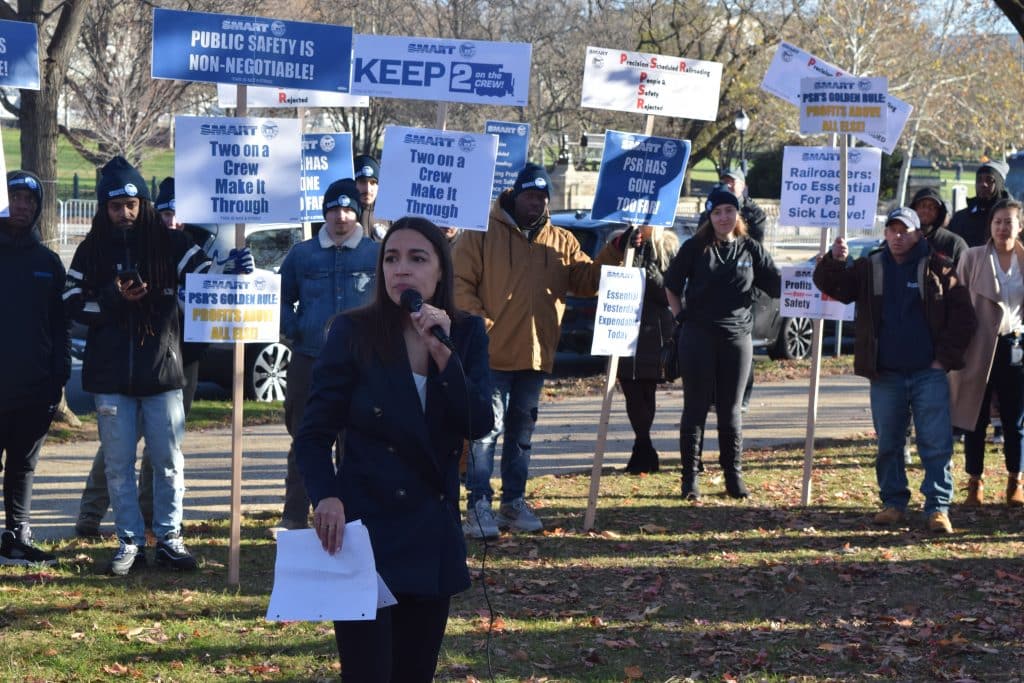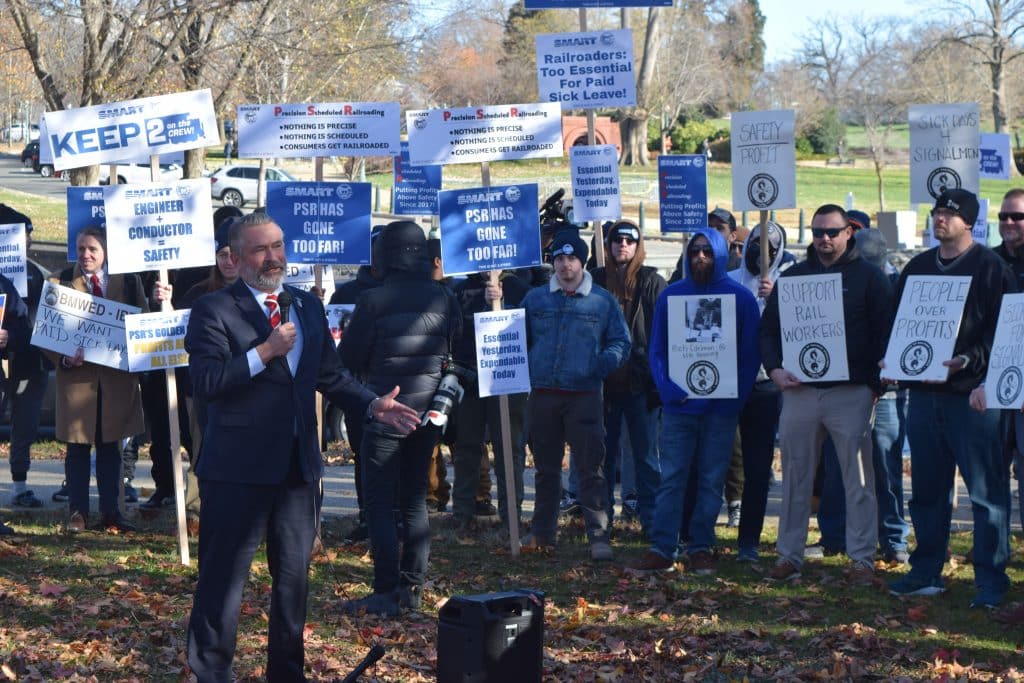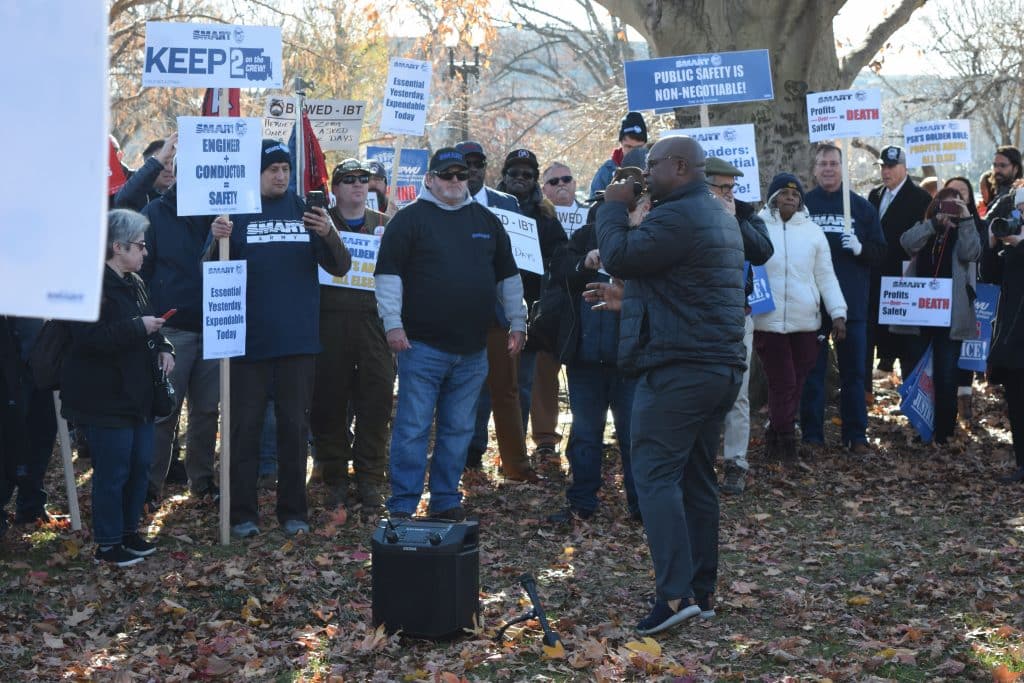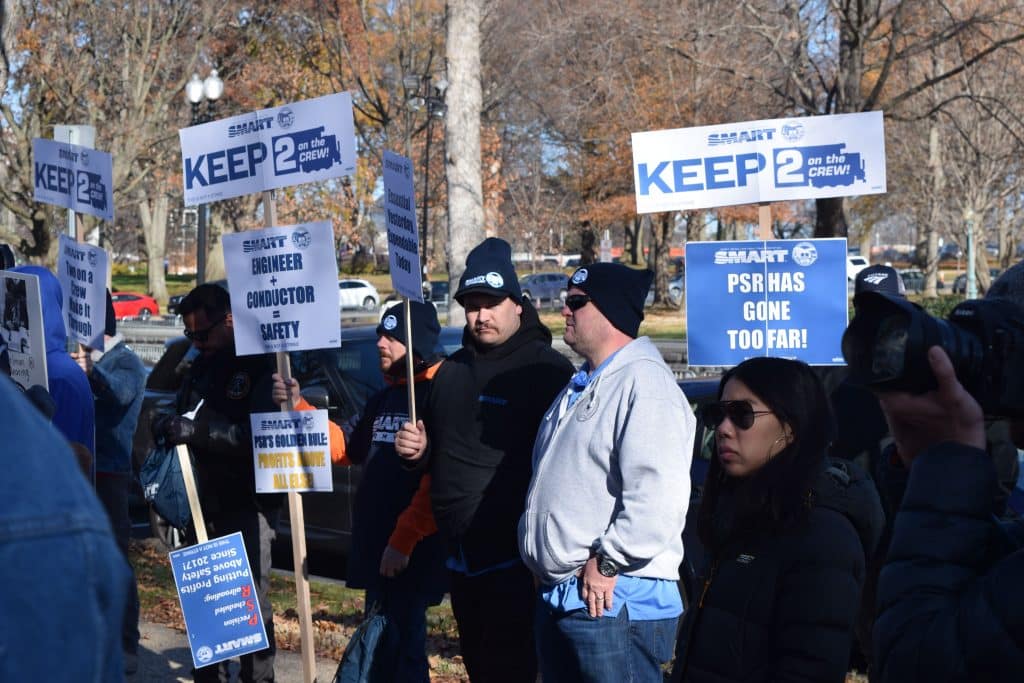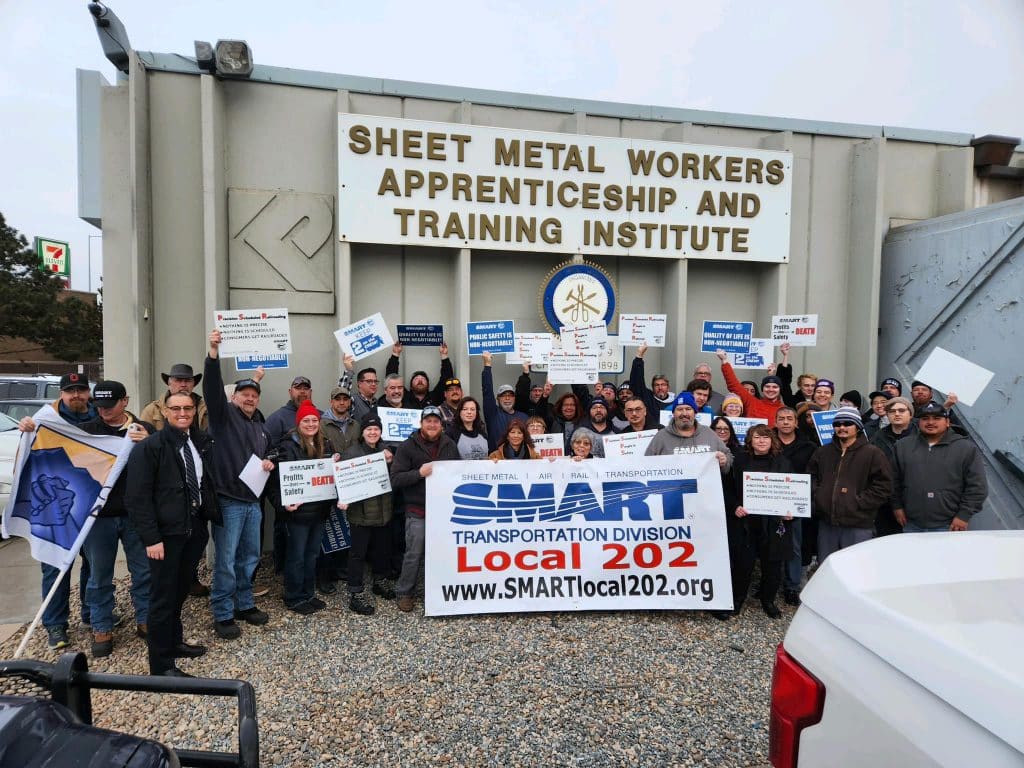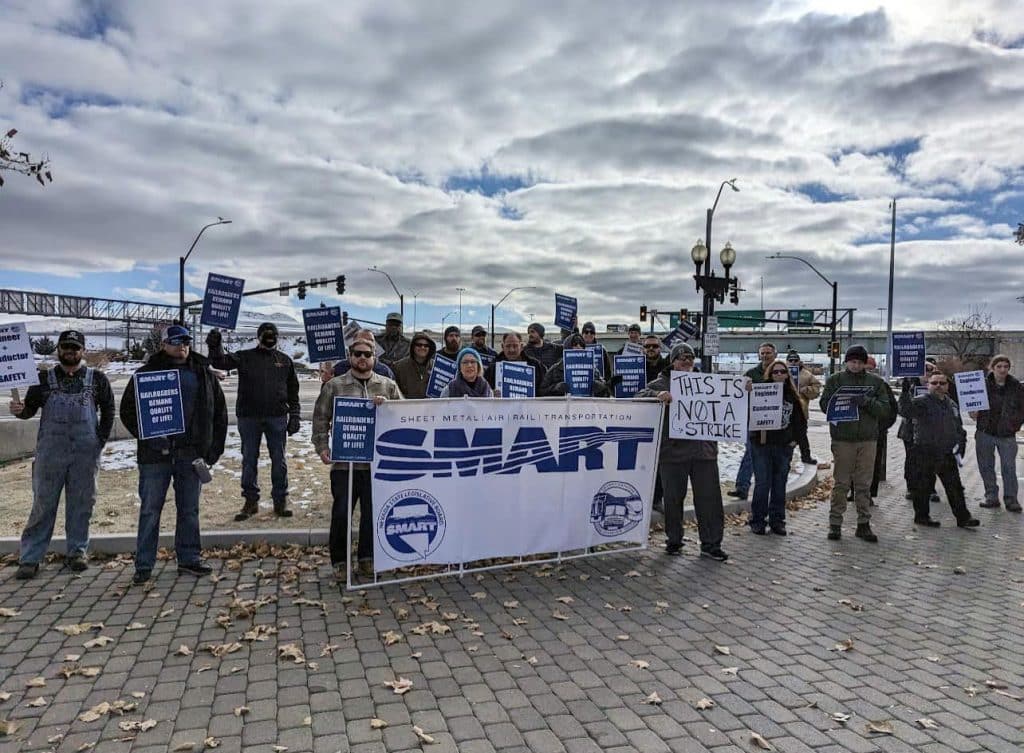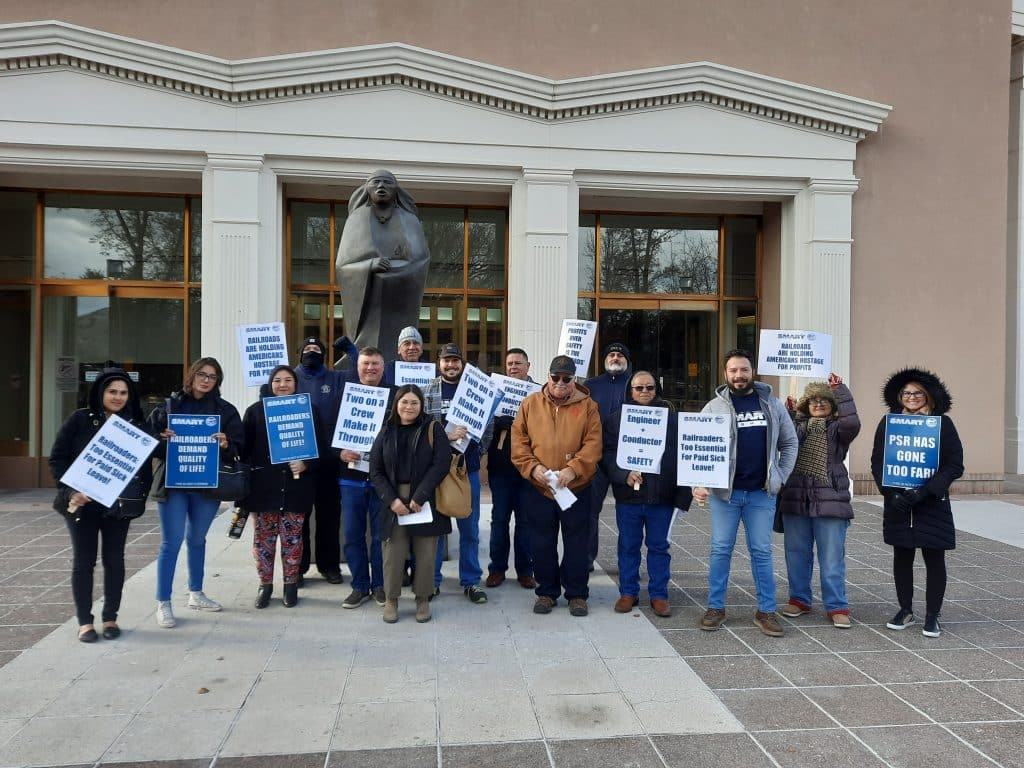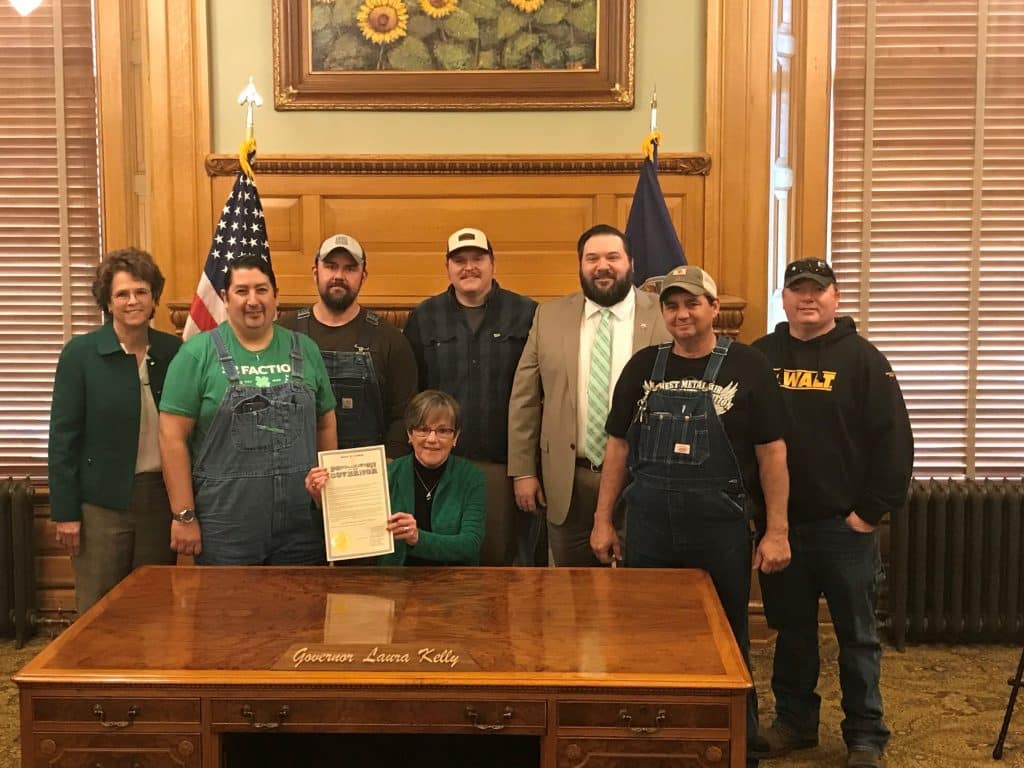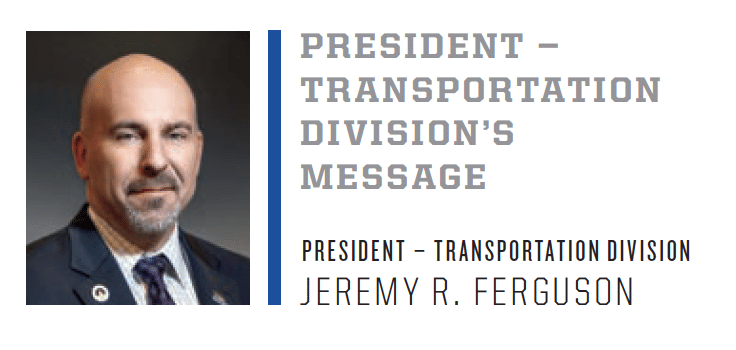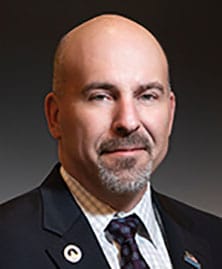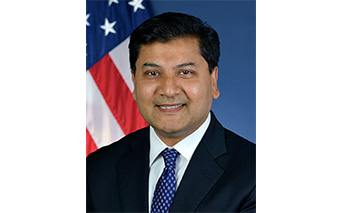It’s a shame, really, that the safety of my members, the public and the infrastructure are nothing more than political pawns in the railroads’ game of never-ending greed. And it’s a shame, frankly, that the railroads manipulate woefully inept individuals – having never meaningfully walked the ballast or performed the myriad tasks of a conductor or engineer from inside the cab of a locomotive – and contributing editors, to carry their water in the hopes of somehow creating a narrative that corporate profit (as compared to safety) is the greater good.
On Tuesday, August 2, Railway Age published an article titled “Biden Promise Fueled FRA NPRM,” wherein its author bows to his superiors’ bidding and attempts to make the case that data is in their favor. But to do so, he had to sharpshoot for supporting documentation and data, blindly whisking by the plethora of reports and studies that stand as mountains between them and reality, and he had to bend quotes and statements made as if he were some sort of deceitful, abstract performer.
Only in corporate America can a promise of maintaining the safest course be misconstrued to the public as being unethical. In fact, it seems quite ironic that the article’s author accuses this Union of being a special interest when the former FRA Administrator broke from the agency’s position and capitulated to the railroad executives’ pressure by withdrawing the ongoing crew size regulation, only to be defeated in federal court.
The rationale is sound, and the need for regulation is necessary. I find it ridiculous that the author of a book theoretically explaining the purpose and processes of the Railway Labor Act is incapable of comprehending the role of politics in the prioritization of safety and the overall welfare of America’s railroad workers.
The Many Omissions of a Man Not Actually from the Industry
Positive Train Control (PTC) is a $15 billion safety overlay system that is incapable of performing the cognitive functions and tasks of a certified conductor. This was identified by FRA in its January 2020 Final Report, Teamwork in Railroad Operations and Implications for New Technology, and its July 2012 Final Report, Cognitive and Collaborative Demands of Freight Conductor Activities: Results and Implications of a Cognitive Task Analysis. Simply put, PTC does not, and cannot perform the functions of an onboard conductor, and it cannot provide the benefits of two human beings working in collaboration inside the cab of a locomotive.
Railroading is a high-risk industry. And like all other high-risk industries, teamwork is the most critical component. Over the last two decades railroads have achieved their safest and richest era because of the two-person crew. Ironically, however, is the industry’s failure to record and report its near misses. Unlike aviation, which has had a near-miss reporting system for years, the railroads have fought off FRA’s and labor’s many attempts to capture the data of accidents that didn’t occur because of the actions of a two-person crew. Had that data been collected, the truth of the safety benefits of a two-person crew could have long been made public.
Rightfully, the NPRM seeks to act where collective bargaining cannot. It is an asinine notion to consider that safety should be subject to the chopping block by way of the negotiating table. After all, the FRA’s mandate is to “enable the safe, reliable, and efficient movement of people and goods.” So why should they suggest that safety somehow be up for negotiation when the gambling of rail workers’ lives would clearly be a dereliction of duty, especially when there is no data to support it?
“Another item omitted is the fallacy of the PTC and locomotive technological systems as they exist today. Every day, our members report dozens, if not hundreds, of initial-terminal and en route failures across the nation’s rail network. Train crews have literally learned not to depend on its functionality, but rather to anticipate it dropping out.”
The Class I industry does not employ a single-person crew concept on any territory. The fact is, there is no data to support or suggest what would happen should a reduction be permitted to occur. Therefore, in the absence of data, the determination (should it happen) to remove a crew member from the cab of a locomotive equates to nothing more than risk.
The author attempts to blur that reality by comparing operations on short-line railroads and one-off situations, but he fails to present in his article that these railroads are much smaller in size, slower in on-track movements, and far less complicated than their big brother counterparts; not to mention that their train consists are vastly shorter and lighter as well.
Another item omitted is the fallacy of the PTC and locomotive technological systems as they exist today. Every day, our members report dozens, if not hundreds, of initial-terminal and en route failures across the nation’s rail network. Train crews have literally learned not to depend on its functionality, but rather to anticipate it dropping out. The author offers no viable option for this scenario, but rather pretends to portray the system as absolute, despite having no real-world knowledge. It is because of the two-person crew that this problem has not been exacerbated into catastrophe.
Likewise, PTC also does not account for the growing length of trains. In the railroads’ pursuit of the lowest operating ratio, which is nothing more than an industry-created measure to exhibit to Wall Street that a railroad can cut its way to profits, the average length of trains has grown exponentially; a concept the carriers have lovingly embraced. Unfortunately, for the communities in which these railroad properties intersect, derailments and blocked crossings have become a plague to society. By theoretically placing a conductor into a ground-based vehicle, the only known variable that will arise in these instances is that the conductor will most likely not be in place to act in an emergency, much less with any urgency. As it stands, a conductor is readily available on the locomotive to act as a first responder at a moment’s notice. A routine that has been proven time and time again.
“To be blunt, this nation’s regulatory agencies should not allow corporate entities to self-regulate, as their bottom line obscures the purpose and promise of their mission to keep their employees’ work environment safe.”
However, should a railroad desire to veer from the safest course, it may attempt to do so through the proposed rule’s waiver process, which the author, trying to charm his influencers, portrays as an unfair level of scrutiny and rigged process. His words, which are nothing more than an amplification of the railroads’, reek of similarities to Boeing’s cries to the FAA years before the 737 Max accidents.
To be blunt, this nation’s regulatory agencies should not allow corporate entities to self-regulate, as their bottom line obscures the purpose and promise of their mission to keep their employees’ work environment safe. Like eyes following the bouncing ball of karaoke lyrics, rail carriers have proven their willingness to abruptly reverse course in capitulation to outside pressures originating from their hedge fund investors. It is because of this that the NPRM’s waiver process is necessary, and is exactly why it must be transparent, rigorous and thorough.
Common sense safety provisions do not stymie or impede future innovation, they protect it, and any assertion to the contrary is absurd. The railroads, like aviation, have realized their greatest advancements in technology with a crew of two at the controls. Now, they want you to believe that the industry that could afford more than $10 billion in stock buybacks last year alone would somehow be hampered by a regulation such as this.
Rest assured, nothing could be further from the truth. And rest assured that it does not require a single-person crew to provide a better quality of life. There is absolutely nothing preventing America’s rail carriers from providing its workforce with predictable work schedules, more time at home, increased authority, larger rates of pay and protection against furlough. Yet here we are: three and a half years at the negotiating table and forced to a Presidential Emergency Board because the carriers are unwilling to negotiate the very terms described within the author’s article. Let me be clear, quality of life is not a bargaining chip to be used as blackmail against the safety of my members, especially when the carriers have the means and funds to grant it.
The Mystery Argument of Data, Despite the Absence of Actual or Comparable Data
A railroad is not a railroad, but a spade is a spade. As stated earlier, there are no Class I railroad over-the-road single-person crew operations in this nation, and a Class I in comparison to a commuter, Class II or any other designation does not a good argument make.
This country’s railroad network is unlike any other in the world. On average, according to Operation Lifesaver, there is a collision between a train and a person or vehicle every three hours. Astonishingly, there is no process to record and/or report the near-misses that didn’t occur because of the actions of a two-person crew. As a result, it is unknown just how great of an effect a reduction in crew size could have toward an unwanted increase in these types of accidents. This is important because other foreign countries, as the author referenced as being relevant, do not have the same exposures to the public that we do. Their success, if you will, does not equate to our success, as it may very well result in the detriment to our communities.
Additionally, foreign freight trains are much smaller by comparison. According to a FreightWaves article published April 3, 2019, (U.S. and European freight railroads are on different tracks), “… [U.S.] freight trains are often 3,500 meters (2.175 miles) in length; in western Europe, freight train lengths are closer to 750 meters (less than one-half mile).” Simple physics will tell you that fewer rail cars and lighter tonnage will result in fewer mechanical failures, and the ability to stop in less time and drastically shorter distances. Common sense will also tell you that shorter trains result in fewer blocked crossings.
FRA’s January 2020 Final Report, Teamwork in Railroad Operations and Implications for New Technology, states that “[c]onductors also provide several additional cognitive support functions to locomotive engineers that PTC does not provide. These functions include supporting locomotive engineers in monitoring events outside the cab window for potential obstacles and hazards that would not be detected by automated systems (e.g., people working on or around the track; trespasser; cars at grade crossings). They also include filling knowledge gaps that locomotive engineers may have (e.g., knowledge of the territory; appropriate interpretation of operating rules) and supporting decision-making (e.g., where to stop to avoid blocking a grade crossing). Knowledge and decision-making support is especially important in the case of less experienced locomotive engineers. Conductors also serve an important role in handling unanticipated events and keeping the locomotive engineer alert, especially on long monotonous trips where there is a risk of falling asleep.”
“The mass exodus of workers in today’s railroad industry will have a long-term, adverse effect on the knowledge and skill base of conductors and engineers. Experience cannot be taught in a classroom. It takes years for these workers to hone their craft.”
The Class I railroads are currently hemorrhaging experienced, mid-career locomotive engineers and conductors. This has had a devastating impact on the supply chain, and this will have a devastating impact on long-term viability. It is no surprise to us that America’s rail shippers have taken to the Surface Transportation Board and the media to speak out against the railroads’ greed and inability to provide a quality service.
But this is particularly important, however, considering what the FRA’s report had to say above – “[conductors] fill knowledge gaps that locomotive engineers may have and [they] support decision making.” The mass exodus of workers in today’s railroad industry will have a long-term, adverse effect on the knowledge and skill base of conductors and engineers. Experience cannot be taught in a classroom. It takes years for these workers to hone their craft. PTC does not and cannot account for that, nor can the locomotive’s energy management systems. Only can the cognitive and collaborative efforts of teamwork overcome a hurdle as large as this.
Yet, in spite of all this, the Class I railroads are actively pursuing the ability to fast-track single-person crew operations without having vetted or tested a single proven or reliable method of operation, because this is just about the only card they have left to play to lower their operating ratios and to perform one last-ditch act for their audience of demanding shareholders. Like puppets on a string, they are succumbing to outside, misguided pressures.
That is why this regulation is needed, and that is why it’s needed with urgency.
As to the author’s rambling of data-to-come – the condemnatory flaw can only be found in his rant. FRA’s purpose is to prevent unsafe conditions from occurring. By his own admission, the collection of credible data is still being developed. But rather than wait for confirmation, the author proclaims that the agency should throw caution to the wind, like chance in the game of Risk, and allow the railroads to continue their current crew-reduction trajectory, despite, once again, not having any data to support his position. At least with a two-person crew, we know that the safest era in railroading history has been achieved. That is one data point that cannot be manipulated. And that is one data point worthy of protecting.
Similarly, and as stated before, the two-person crew has brought about the richest era in Class I railroading history. The Unions are proud of this fact, and we acknowledge that this is a direct representation of our members’ work. So, it is a slap in the face for the author to try so obtusely to make the argument that the railroads would somehow see a negative economic impact when all of the history and data points to the contrary. Ironically, former FRA Administrator Joseph Szabo is criticized in the article for “limit[ing] research to just those sources you want to hear from.” Perhaps the man who wrote these words should take a look in the mirror.
The Safest Way
Without question, the author of the Railway Age article has wonderfully performed like a jester for his majesty’s court. But in the end, it’s nothing more than a shame that he is willing to dance for the railroads as they fill their pockets and turn a deaf ear to my members as they cry out for help.
We do however agree with the author’s statement that our predecessor organization did support PTC in the initial stages. We had members that were a part of the FRA RSAC committee tasked with the development and implementation of PTC. During these jointly-held meetings between the FRA, Rail carriers and union craft members, the carriers stated that PTC was a safety overlay system and not a conduit to replace the conductor. Repeatedly they stated PTC’s implementation was to enhance safety in an attempt to eliminate, as much as possible, human error. As the safety of our members is paramount, we supported and embraced this technology. Our position did not change until the carriers, in an attempt to find a way to lessen the financial burden of PTC, used their handpicked FRA Administrator, an ex-Rail Carrier CEO, to reverse course and state that PTC could now overcome many known faults and shortcomings and miraculously replace the conductor.
“…the carriers stated that PTC was a safety overlay system and not a conduit to replace the conductor. Repeatedly they stated PTC’s implementation was to enhance safety in an attempt to eliminate, as much as possible, human error.”
However, that is where the author’s accuracy ends, and like most things he has written, the author is wrong. PTC does not take the place of a conductor and it does not support the engineer. If anything, it increases the task load. If the carriers would have followed the RSAC committees’ recommendations and placed an operating PTC screen and controls on the conductor’s side of the locomotive, it would have reduced the current task overload that has greatly stricken the vast majority of engineers. PTC is extremely user intensive, requiring constant input and manipulation, and it prevents an engineer from being able to observe his/her territory. Since the advent of PTC and its subsequent implementation, the importance of the conductor’s role within the cab of a locomotive has never been greater. It was determined that the conductor could verify mandatory directives, handle safety-related tasks such as work authorities and confirm PTC alerts in conjunction with the engineer.
Every single day an accident is prevented because of the actions of a conductor, and every single day that data is not collected. In some cases, it may have been by utilizing the emergency brake that is located on the conductor’s side of the locomotive, again correcting the author’s error by stating that there are no controls on that side of the locomotive.
In the end, it all comes down to two outcomes. Is the FRA best served protecting and maintaining a crew size that is known to be safe; that is known to be the best model for customer service; that is known to have made the railroads more money than ever; and is known to have a process via the regulation (should it occur) to have a means and method of allowing for the safe and controlled testing of different crew sizes? Or is it best served to risk chance and see what happens with a reduction in crew size that has no measurable baseline for safety; that has no baseline for profit; and has no baseline for customer service?
Obviously, there is only one outcome for which FRA has the legal authority and obligation to act.
As has been said throughout history, the truth will always be brought to light. And you, too, can look that up.
The SMART Transportation Division is comprised of approximately 125,000 active and retired members of the former United Transportation Union, who work in a variety of different crafts, including as bus and commuter rail operators, in the transportation industry.
Follow this link to read this post as a pdf.
